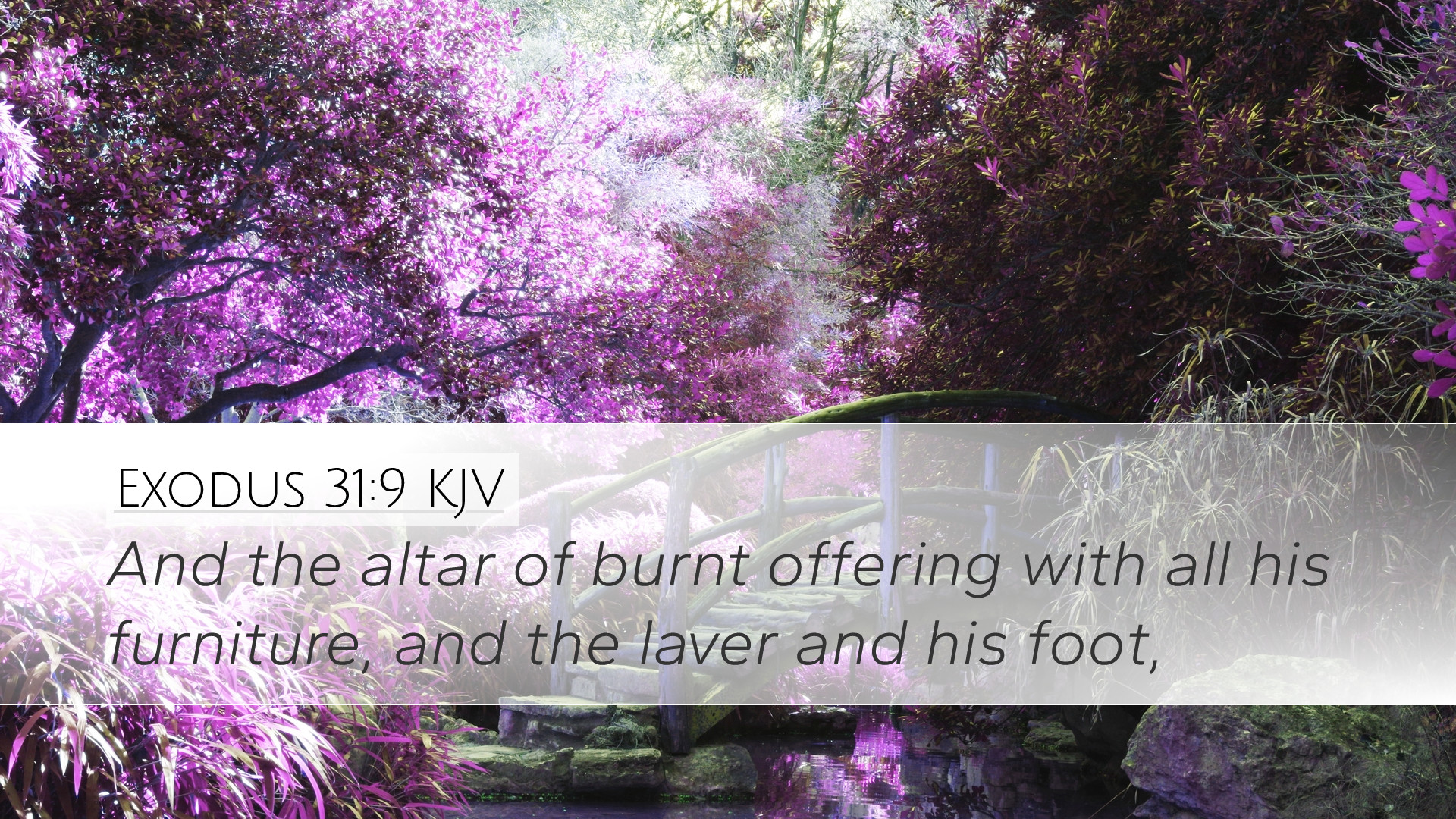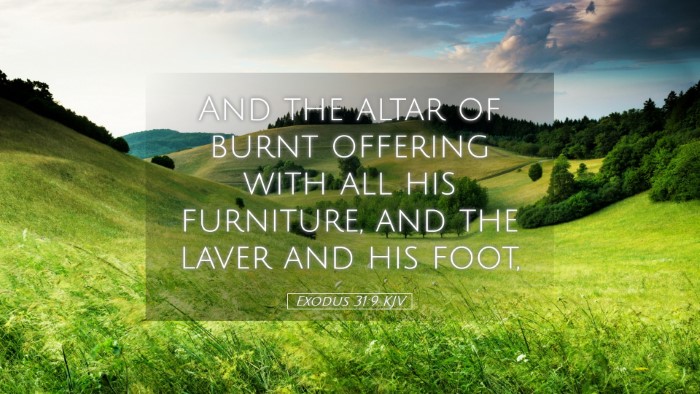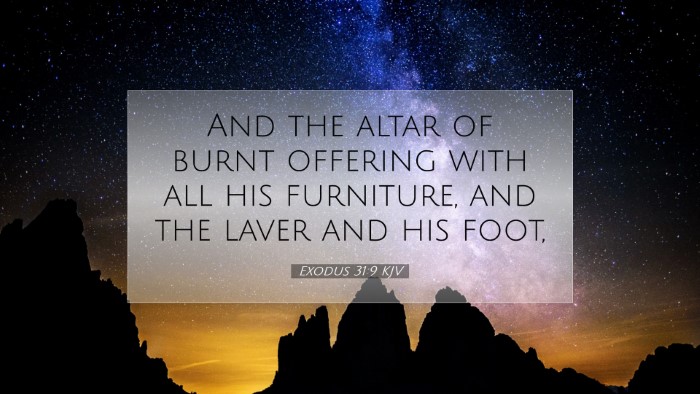Commentary on Exodus 31:9
Verse: "And the cloths of service, and the holy garments for Aaron the priest, and the garments of his sons, to minister in the priest's office."
Contextual Overview
Exodus 31:9 is situated within a crucial part of the Book of Exodus, where God provides detailed instructions for the construction of the Tabernacle and its services. This verse specifically highlights the garments needed for the priesthood, emphasizing their significance in the worship and service to God.
The Significance of Garments
Matthew Henry emphasizes that the garments serve not only a functional purpose but are also integral to the holiness that the priesthood represents. They are designed to reflect the glory of God and to instill a sense of reverence and dignity in the ministry.
Albert Barnes notes that the "cloths of service" and "holy garments" serve as a vital reminder of the distinction between the sacred and the common. The priest was to be arrayed in garments that communicated the gravity of his duties and the purity required when approaching God on behalf of the people.
Types of Garments
The garments specified for Aaron and his sons included various pieces, each with symbolic meaning:
- Breastplate: Exercise of discernment in judgments, symbolizing the burdens of God's people.
- Ephod: Represents strength and is a reminder of the priest's role as a mediator.
- Robe: Signifies dignity and protection.
- Mitre: Denotes authority and holiness.
- Girdle: Represents readiness and stability in service.
Priestly Duties
Adam Clarke comments on the essential nature of the priest's garments in relation to their duties. The priests were called to minister in a manner that was set apart; thus, their attire needed to reflect that calling. The garments were not mere clothing but were imbued with a divine purpose.
Spiritual Implications
Through the detailed instructions in Exodus 31:9, we see a foreshadowing of the New Covenant where Christ becomes the ultimate High Priest. The significance of the priestly garments can be interpreted as a reflection of Christ's righteousness and holiness, which is bestowed upon believers today.
Lessons for Today’s Ministry
For pastors, students, and theologians, examining the implications of Exodus 31:9 can lead to profound insights regarding the nature of service in the Church:
- Holiness in Service: Just as the priests had to prepare and present themselves holy to minister, the leaders in the Church today are called to lead with integrity and holiness.
- Symbolism of Clothing: The way one presents oneself can impact the perception of the ministry and the message being conveyed.
- Role of Mediators: Understanding the role of intercessors in the contemporary Church echoes the mediation role of Aaron and his sons.
Conclusion
Exodus 31:9 encapsulates the essence of divine service, the importance of holiness, and the functionality of symbolic actions in worship. By studying the commentaries of revered scholars, we are reminded that our approach to ministry must remain rooted in reverence, integrity, and a commitment to representing God's holiness as seen through the imagery of the priestly garments.


